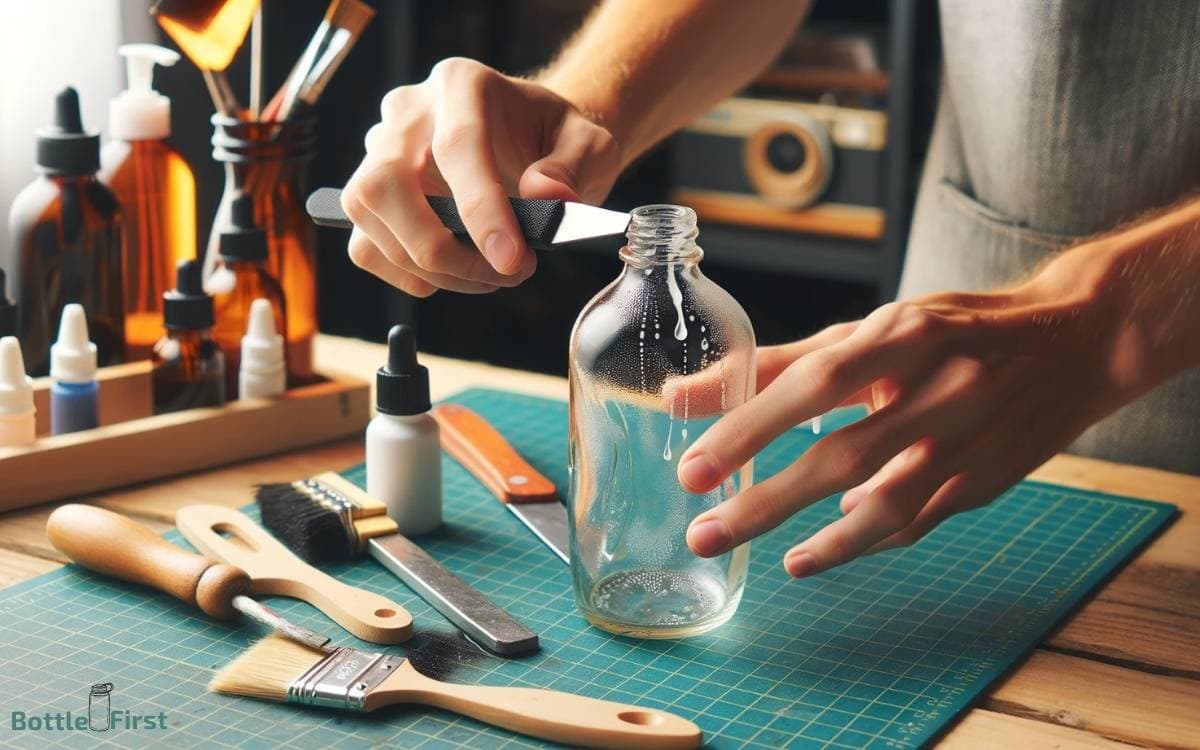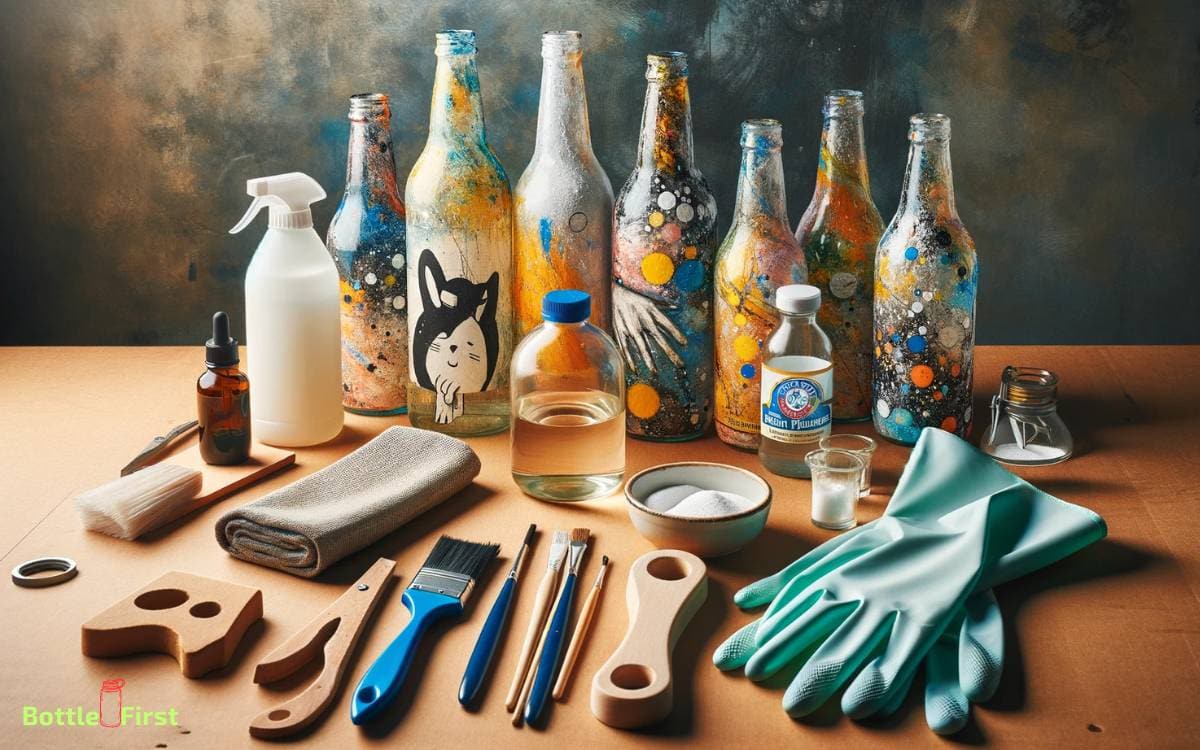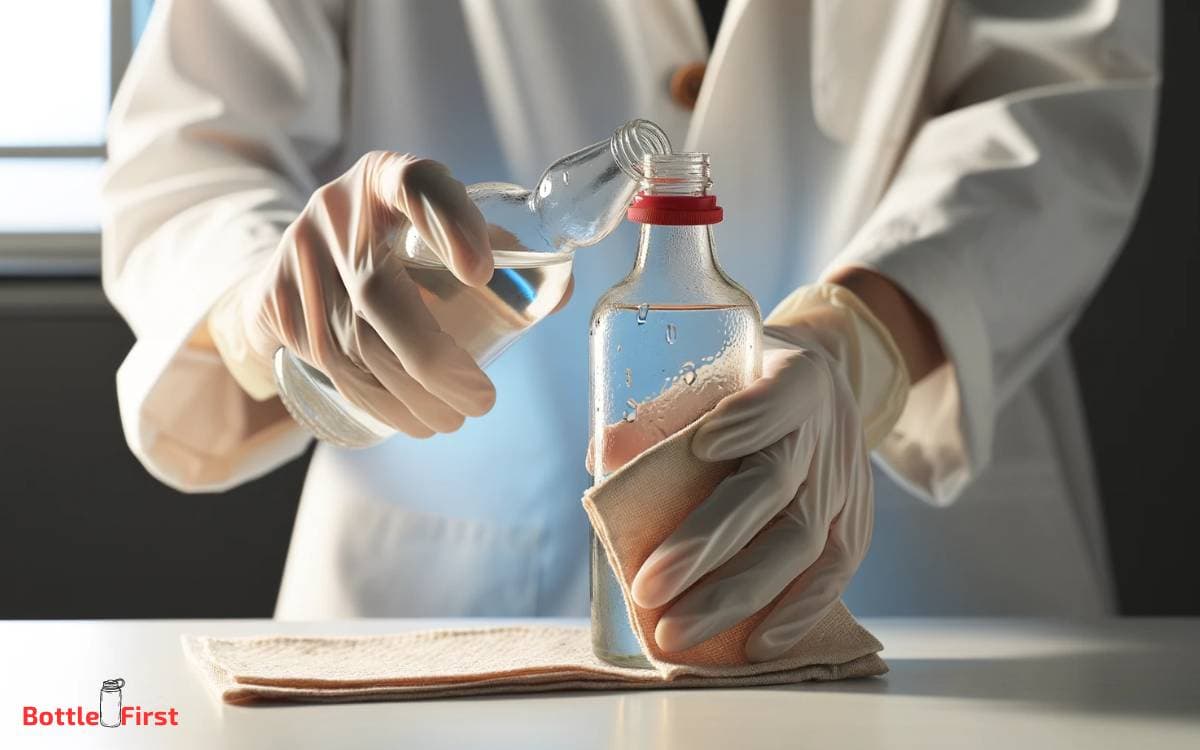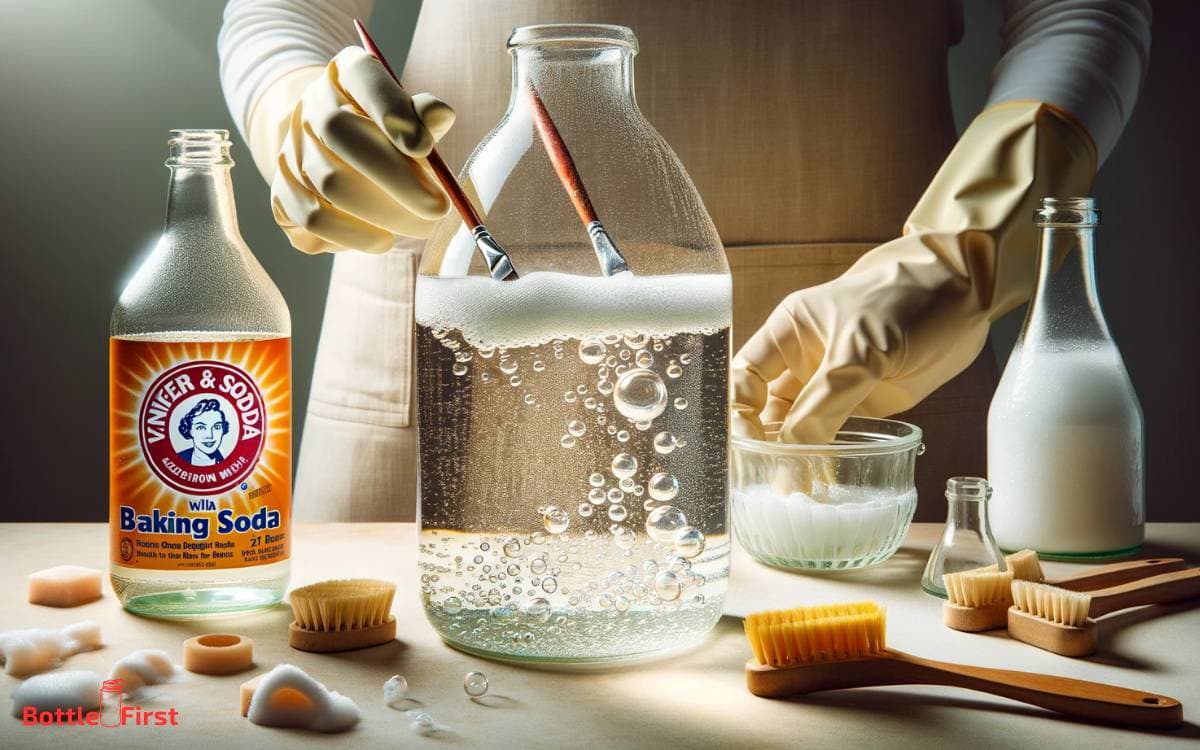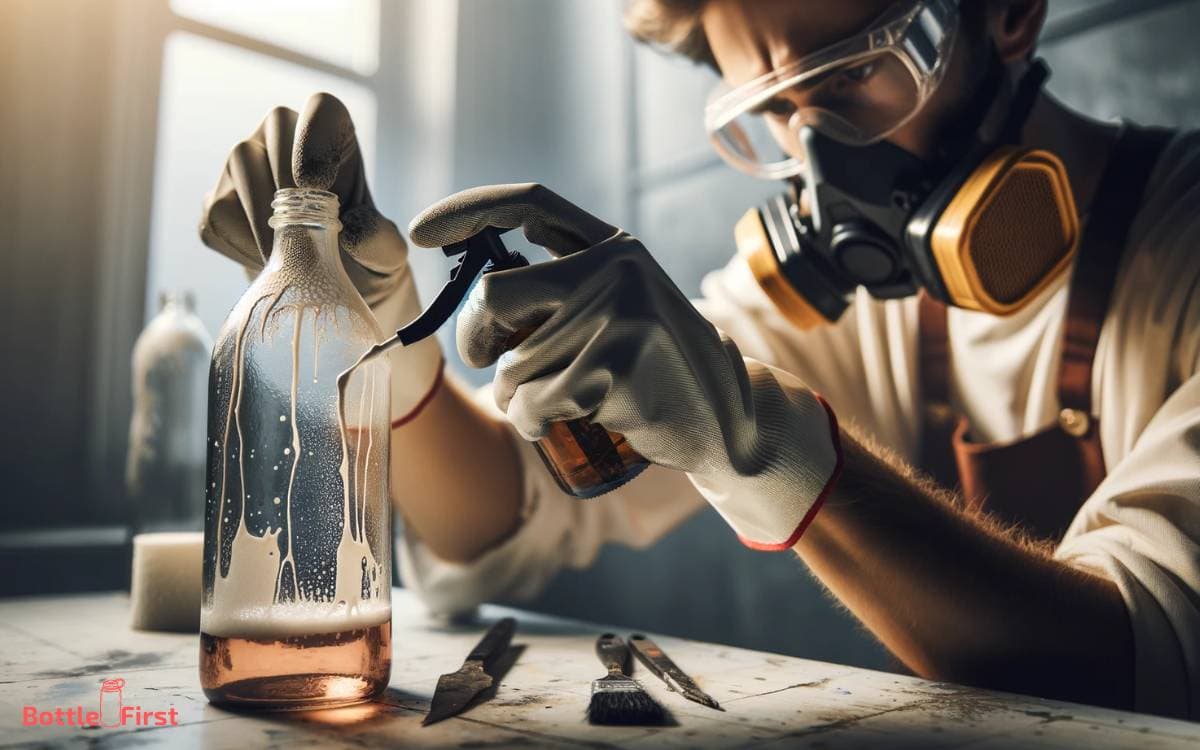How to Remove Acrylic Paint from Glass Bottles? 5 Steps!
To effectively remove acrylic paint from glass bottles, you can use several methods such as soaking in soapy water, applying rubbing alcohol or acetone, utilizing a razor blade, or employing a combination of these techniques.
Removing acrylic paint from glass bottles involves softening the paint before gently scraping or wiping it away.
Here are some quick steps:
Discover the hassle-free way to restore the original shine of your glass bottles by effectively removing acrylic paint.
Key Takeaway
Materials Needed
You’ll need a few common household items for removing acrylic paint from glass bottles, such as rubbing alcohol and cotton balls.
First, gather the necessary materials:
- Rubbing alcohol
- Cotton balls
- A small bowl
- A plastic scraper or old credit card
- Dish soap
Rubbing alcohol is an effective solvent for acrylic paint and can easily be found in most homes. Cotton balls are perfect for applying the rubbing alcohol to the glass bottles. The small bowl will be used to hold the rubbing alcohol, making it easier to dip the cotton balls.
A plastic scraper or old credit card is essential for gently scraping off the paint without damaging the glass. Lastly, dish soap will be used for cleaning the bottles after removing the paint.
Step 1: Preparation Steps
Prepare the work area by laying down old newspapers or a plastic drop cloth to protect the surface from any potential spills or drips. This will ensure that your workspace remains clean and free from any unwanted paint stains.
Additionally, gather all the necessary materials for the paint removal process, such as gloves, a paint scraper, rubbing alcohol, and a soft cloth. Organizing these items beforehand will streamline the process and prevent any interruptions.
Make sure to ventilate the area well, as some paint removal methods may involve strong solvents or chemicals. Having good ventilation will help to minimize any fumes and ensure a comfortable working environment.
Step 2: Using Rubbing Alcohol
You can use rubbing alcohol to effectively remove acrylic paint from glass bottles. It’s important to take safety precautions when using alcohol, such as working in a well-ventilated area and avoiding direct contact with skin or eyes.
Understanding the effectiveness and safety measures for using rubbing alcohol will help you successfully remove acrylic paint from glass bottles.
Rubbing Alcohol Effectiveness
To effectively remove acrylic paint from glass bottles, start by applying rubbing alcohol onto the painted areas using a clean cloth.
The rubbing alcohol method offers several advantages to innovate your paint removal process, including:
- Efficient removal: Rubbing alcohol works swiftly to dissolve and lift the acrylic paint, saving you time and effort.
- Minimal residue: It leaves behind minimal residue, making the subsequent cleaning process easier and ensuring a pristine glass surface.
- Versatility: Rubbing alcohol is a versatile and readily available solution that can be used for various DIY projects.
By harnessing the effectiveness of rubbing alcohol, you can revolutionize the way you approach removing acrylic paint from glass bottles.
Safety Precautions for Alcohol
When using rubbing alcohol to remove acrylic paint from glass bottles, ensure adequate ventilation and wear protective gloves to minimize skin contact.
Ventilation helps to disperse the fumes from the alcohol, reducing inhalation risks. Additionally, gloves act as a barrier, preventing direct contact with the alcohol, which can dry out and irritate the skin with prolonged exposure.
It’s also important to avoid any contact with the eyes and mucous membranes, as rubbing alcohol can cause irritation. If accidental contact occurs, rinse thoroughly with water.
Store rubbing alcohol in a safe place, away from heat sources and open flames, as it’s flammable.
Step 3: Using Vinegar and Baking Soda
If you’re looking for an alternative method to remove acrylic paint from glass bottles, using vinegar and baking soda might be the solution for you.
The acidity of vinegar makes it effective for paint removal, while baking soda helps with the scrubbing process.
This method is known to be quite effective on glass surfaces, making it worth a try for your paint removal needs.
Vinegar for Paint Removal
How can you effectively use vinegar and baking soda to remove acrylic paint from glass bottles?
Here’s a simple and innovative method to try:
- Mix equal parts of white vinegar and baking soda to create a paste.
- This combination creates a powerful and eco-friendly cleaning agent that can effectively break down acrylic paint.
- Apply the paste to the painted areas of the glass bottle.
- The fizzy reaction that occurs when the vinegar and baking soda combine helps to loosen the paint for easier removal.
- Let the paste sit for about 15-20 minutes, then scrub the painted areas with a sponge or brush.
- This method isn’t only effective but also provides a natural and non-toxic approach to removing paint from glass bottles.
Baking Soda Application
To remove acrylic paint from glass bottles, follow these steps:
- Apply a paste of equal parts white vinegar and baking soda to the painted areas. This will harness the power of chemical reactions to break down and lift the stubborn paint from the glass surface.
- Let the paste sit for about 15-20 minutes to allow the reaction to take place.
- Using a damp cloth or sponge, gently scrub the affected areas. The combination of vinegar and baking soda creates a fizzing action that helps to loosen the paint, making it easier to remove.
- Once the paint has been lifted, rinse the glass bottle thoroughly with water to remove any residue.
This innovative approach provides an effective and environmentally friendly way to restore your glass bottles to their original state.
Effectiveness on Glass
Applying the paste of equal parts white vinegar and baking soda to the painted areas on the glass bottles harnesses the power of chemical reactions to break down and lift the stubborn paint, providing an effective and environmentally friendly method to restore the glass to its original state.
This method offers several benefits:
- It creates a fizzing reaction that can be visually satisfying, making the paint removal process engaging and innovative.
- The use of natural ingredients like vinegar and baking soda aligns with a desire for eco-friendly solutions, appealing to those who value sustainability and innovation.
- The combination of vinegar and baking soda is a powerful yet gentle approach, evoking a sense of confidence in the effectiveness of this method and the care it provides for the glass surface.
Step 4: Using Paint Stripper
Using paint stripper can effectively remove acrylic paint from glass bottles. This method is particularly useful for stubborn or old paint that hasn’t responded to other removal techniques.
To use paint stripper, apply a generous amount to the painted area and let it sit for the recommended time specified on the product label. Once the paint softens, gently scrape it off with a plastic scraper or a cloth.
Be sure to follow safety precautions when using paint stripper, such as wearing gloves and working in a well-ventilated area.
After removing the paint, thoroughly clean the glass bottle with soap and water to ensure all traces of the paint stripper are removed.
Transitioning into the subsequent section, once the paint is removed, there are some final steps and tips to consider for restoring the glass bottle to its original state.
Step 5: Final Steps and Tips
After removing the paint, thoroughly clean the glass bottle with soap and water to ensure all traces of the paint stripper are removed.
To further restore the glass bottle to its original state, consider using a glass cleaner to remove any remaining residue and give the bottle a polished finish.
- Embrace the sparkling clarity of your glass bottle, reflecting light in a dazzling display.
- Experience the satisfaction of seeing your glass bottle restored to its pristine condition.
- Enjoy the innovative feeling of using modern products and techniques to achieve a flawless result.
- Let the renewed elegance of your glass bottle inspire your next creative project.
Conclusion
Removing acrylic paint from glass bottles can be as easy as peeling a banana. With just a few household items and a little bit of elbow grease, you can have your glass bottles looking brand new in no time.
So go ahead and unleash your inner artist without the worry of messy cleanup. It’s like wiping away a rainy day to reveal a bright and sunny sky.
Happy painting!
